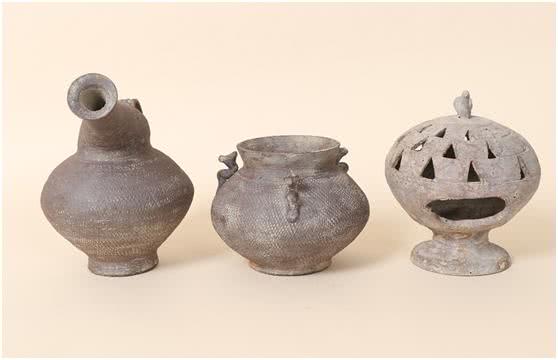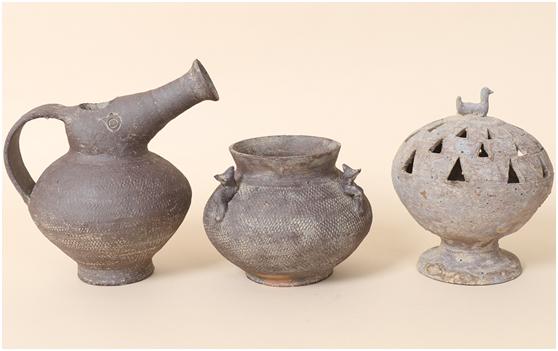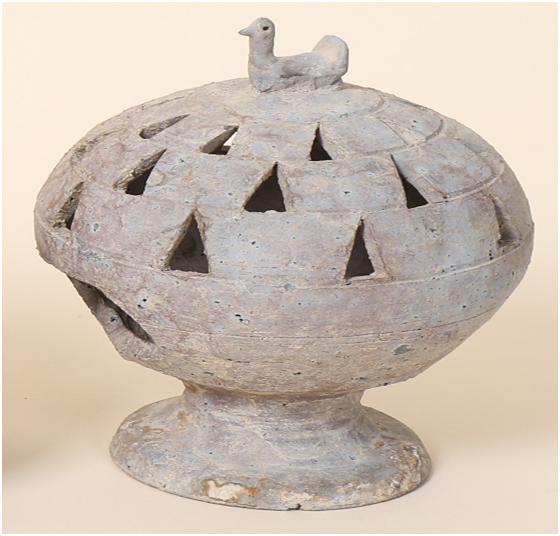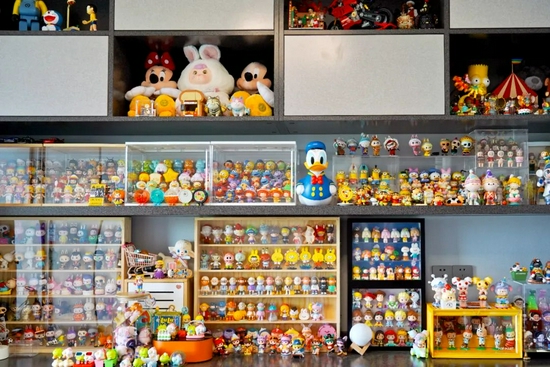頂級推薦 江西私人收藏家周先生高古陶器尋實力買家
近日公司有幸徵集到江西私人收藏家周先生的藏品、該藏品經公司權威專家老師鑑定爲春秋戰國陶器一組、胎質較粗,叩之有金石之聲,釉色比陶光亮,與同期印紋硬陶的裝飾風格極爲類似,此藏品在如今的藝術界鳳毛麟角、極其罕見。
Recently, the company had the honor to collect the collection of Mr. Zhou, a private collector in Jiangxi Province, which was identified by the company's authoritative experts and teachers as a group of pottery in the Spring and Autumn Period and Warring States Period. The quality of the collection was thick, with the sound of stone and stone, and the glaze color was brighter than that of pottery, which is very similar to the decorative style of hard pottery with printed grain in the same period. This collection is rare and extremely rare in today's art world.
原始瓷器是在製陶技術的基礎上發展而來的。瓷器的原始階段製品。一種用含鐵量在2%左右的粘土成型,經過人工施釉,有1200℃左右的高溫燒成的青釉製品。這類器物在五十年代前尚未被人們認識。一度曾有“釉陶”、“青釉器”等不同名稱。現國內外陶瓷界多數人已同意用“原始瓷器”命名,但也有少數人仍沿用“釉陶”,國外亦有稱爲炻器的。器物大多是尊、罍、簋、壺、匜、盂、豆、罐、鼎、杯等盛器,至春秋、戰國時期也有一部分鐘、錞於等仿青銅禮器。
Primitive porcelain was developed on the basis of pottery making technology. The original stage of porcelain. A green glaze product is formed from clay with iron content of about 2 % and sintered at high temperature of about 1200 ℃ after artificial glazing. This kind of utensil was not known before the 1950s. At one time there were different names such as " glazed pottery" and " glazes". At present, most people in the ceramic industry at home and abroad have agreed to use the name " primitive porcelain", but some still use " glazed pottery" and some are called stoneware abroad. Most of the utensils are bronze vessels such as Zun, Zhen, Gui, Pot, Qi, Jar, Bean, Pot, Ding, Cup, etc. There were also some bronze ritual vessels such as Zhong and Zhu in the Spring and Autumn Period and Warring States Period.
原始瓷製坯的原料多數不做處理,胎質較粗,製作時通常採用泥條盤築的方法,輔助手工捏或者輪制,器形不規整,胎體厚薄不勻,器物內外施有薄釉,釉色有青、青黃、青綠、黃綠、綠褐、茶黃等;常見的紋飾有方格紋、籃紋、葉脈紋、鋸齒紋、弦紋、席紋、圓圈紋以及繩紋,與同期印紋硬陶的裝飾風格極爲類似。原始瓷的胎骨比陶器細膩堅硬,叩之有金石之聲,釉色比陶光亮,施在器表和口沿部分。到了東漢時期,原始瓷逐漸被成熟的青瓷取代,由此我國開始出現了現在人們所說的瓷器,這時的瓷器採用瓷石或高嶺土作胎體坯料,用1180℃以上的溫度燒成,胎體施釉,釉胎結合緊密。
Most of the raw materials for making the original porcelain blank are not treated and the quality of the embryo is relatively thick. During the production, the method of clay strip coiling is usually used to assist hand kneading or rotating, the shape of the ware is irregular, the thickness of the carcass is uneven, thin glaze is applied inside and outside the ware, and the glaze colors are green, bluish yellow, bluish green, yellowish green, greenish brown, tea yellow, etc. The common patterns are checkered, basket, vein, sawtooth, string, mat, circle and rope, which are very similar to the decorative style of hard pottery printed in the same period. The bone of the original porcelain is finer and harder than pottery, with the sound of stone and stone knocking, and the glaze is brighter than pottery and applied to the surface of the utensil and along the mouth. By the Eastern Han Dynasty, the original porcelain was gradually replaced by mature celadon, thus China began to appear what people now call porcelain. At this time, porcelain was made of porcelain stone or kaolin, fired at a temperature of 1180 ℃ or higher, the porcelain body was glazed, and the glaze was closely bonded.
此藏品爲“春秋戰國時期陶器一組”雖然古陶不會說話,但它開出的藝術之花卻吸引着全世界的收藏者爭相觀賞、採摘,這些曾經讓人“不屑一顧”的罈罈罐罐如今成了收藏新寵。
This collection is " a group of pottery in the spring and autumn period and the warring States period". although the ancient pottery can't speak, its artistic flowers attract collectors from all over the world to watch and pick them. these once - contemptible jars and jars have become a new favorite.
地址:廣東省珠海市香洲區人民西路777號敦煌大廈八樓
自古以來,我國社會崇尚厚葬,陶器可久藏不朽,成了的陪葬品,有模型房舍、樂器、鳥獸、以及人俑,秦漢時期的兵馬俑最爲有名,最近陸續出土狻爲考古學者重視。
使用俑代替活人陪葬,春秋時期已經盛行,孔子《論語》當中就有“始作俑者,其無後呼”的表述。秦兵馬俑則到達了頂峯,兵馬俑多用模塑結合的方法制成,先用陶模作出初胎,再覆蓋一層細泥進行加工刻劃加彩,有的是先燒後接,有的是先接再燒,火候均勻、色澤單純、硬度很高。
查看原文 >>












